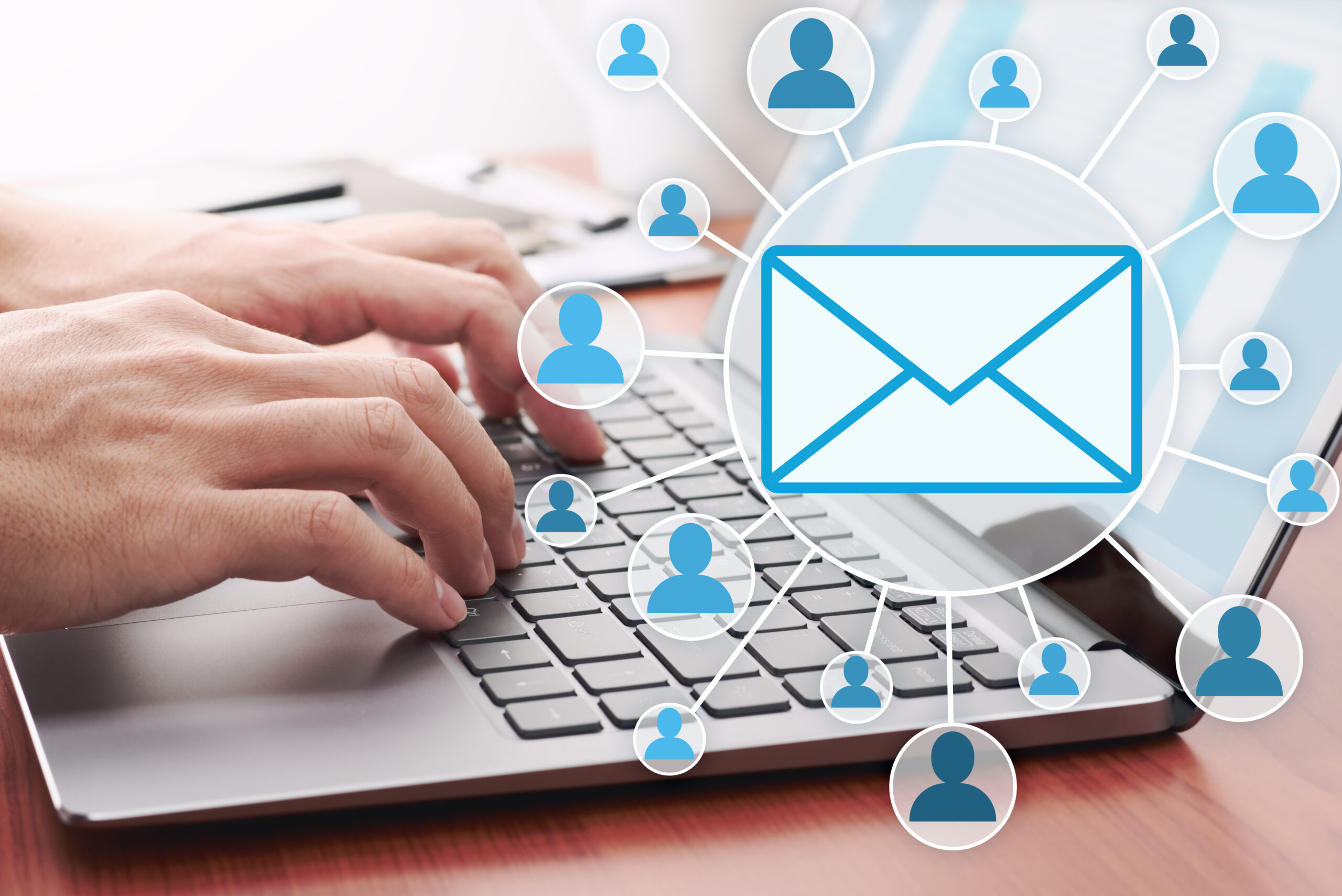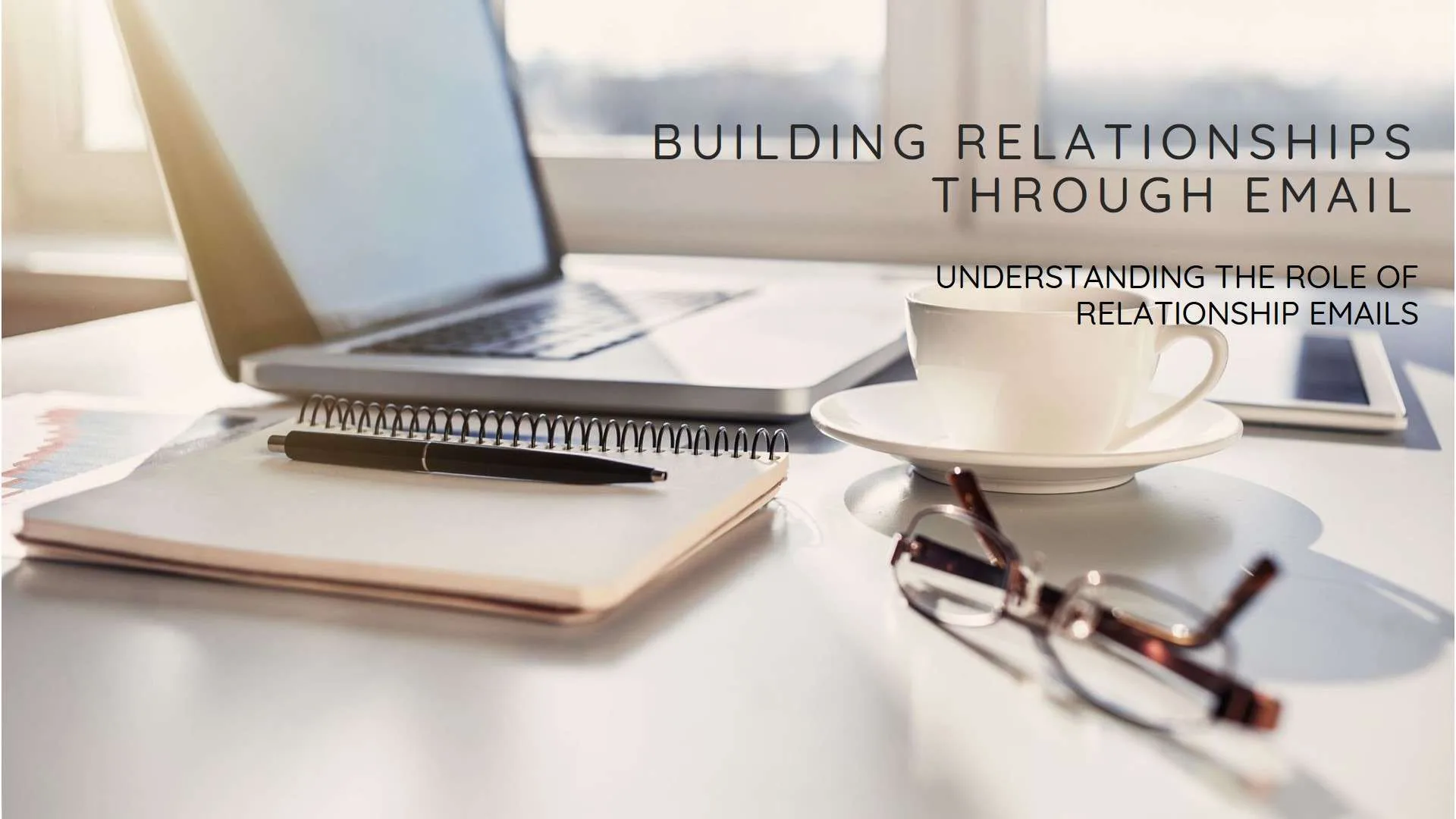Introduction on In Email Marketing What Is a Relationship Email?
In today’s digital marketing landscape, email marketing remains a powerful tool for businesses striving to create meaningful connections with their audience. One crucial component often highlighted by successful marketers is the concept of relationship emails. But in email marketing, what is a relationship email? Essentially, relationship emails are designed to build, nurture, and strengthen the bond between a brand and its subscribers, paving the way for enhanced engagement and loyalty.
Understanding the intricacies of relationship emails and their strategic implementation can significantly boost your email marketing efforts. These emails go beyond mere promotional content; they focus on delivering value, understanding recipient needs, and fostering a sense of belonging among subscribers. In an era where personalized and targeted communication drives consumer behavior, mastering the art of relationship emails can set businesses apart in a competitive market.
As we delve deeper, this blog will unravel the various facets of relationship emails, showcasing their pivotal role in not only retaining customers but also converting leads into dedicated brand advocates. By cultivating trust and providing consistent, valuable content, relationship emails can transform your email marketing strategy, resulting in long-term growth and success.

Understanding Relationship Emails in Email Marketing
In the landscape of email marketing, a relationship email serves as a cornerstone for nurturing long-term connections between businesses and their audience. Unlike promotional emails, which typically aim to drive immediate sales or conversions, relationship emails focus on building trust, loyalty, and engagement over time. These emails prioritize content that adds value to the recipient, fostering a sense of connection and community.
Relationship emails often contain personalized content tailored to the recipient’s interests, behaviors, or preferences. This level of customization enhances the relevance of the communication, making it more likely that subscribers will engage with the content. Examples of relationship emails include welcome messages for new subscribers, birthday or anniversary greetings, and updates on product usage or industry trends.
The primary purpose of a relationship email is to establish and maintain a rapport with the audience. By consistently providing meaningful and relevant information, businesses can build a foundation of trust. This, in turn, leads to increased customer loyalty and, eventually, higher lifetime customer value. Relationship emails are less about immediate gains and more about long-term benefits, creating a win-win situation for both the business and its customers.
Another distinct feature of relationship emails is their tone. These emails adopt a conversational and friendly approach, making recipients feel valued and understood. This contrast from the more sales-focused tone of promotional emails makes relationship emails a vital component of a balanced email marketing strategy. They play a crucial role in differentiating a brand from its competitors by emphasizing the human element of the business.
Overall, understanding the essence of relationship emails in email marketing is vital for any business aiming for sustained engagement and customer retention. These emails are not just a tool for communication but a strategic asset that can significantly enhance the customer experience and strengthen the customer-business relationship.

What are Relationship Emails?
Relationship emails play a pivotal role in email marketing, designed explicitly to nurture an ongoing connection with recipients. In email marketing, what is a relationship email if not a tool to cultivate long-term engagement with subscribers? These emails are crafted to build and sustain a rapport, rather than merely prompting immediate sales or transactions. The main objective centers around fostering loyalty and ensuring that the recipient perceives value beyond mere promotional content.
An array of relationship emails exists to cater to different stages and interests of the recipient. For instance, welcome emails are typically the first point of contact when a new subscriber joins a mailing list. These emails aim to make a strong first impression, offering a warm introduction to the brand and setting a positive tone for future interactions. By providing useful information and perhaps a welcome discount, these emails set the stage for a meaningful relationship. If you’re exploring strategies to enhance your overall engagement, check out these best practices for web stories in 2024 that can work alongside your email campaigns.
Birthday messages represent another vital category within relationship emails. Such emails leverage personal data to bring forth unique, celebratory content that resonates on a personal level. These messages not only make the recipient feel valued but also provide an excellent opportunity to present exclusive offers, enhancing both sentiment and engagement. Personalized content such as this deepens the connection and shows that the brand pays attention to its customer base. If you’re thinking about integrating AI to manage personalized content better, tools like Cursor AI can streamline the process.
Re-engagement emails are yet another critical type. When subscriber activity wanes, these emails serve as a gentle reminder, urging recipients to reconnect. The content might vary from special offers to curated content, designed to reignite interest. Effective re-engagement emails can help revive dormant subscribers, effectively reducing churn rates and revitalizing engagement metrics. For more on how technology can enhance re-engagement, consider reading about AI in healthcare, as the same principles of re-engagement can apply across various industries, including email marketing.
Understanding the essence of relationship emails clarifies the overarching goal in email marketing: fostering enduring relationships. Through carefully designed communications such as welcome emails, birthday messages, and re-engagement emails, businesses can maintain a meaningful dialogue with their audience, ensuring long-term loyalty and customer satisfaction. In email marketing, what is a relationship email if not the bridge to sustained customer engagement and trust? If you’re curious about how AI will further shape marketing strategies, explore these AI predictions for 2030 to stay ahead of the curve.
The Importance of Relationship Emails in Email Marketing
In email marketing, relationship emails serve as a crucial bridge between businesses and their audiences. These emails are designed to foster a long-term connection, cultivating trust and loyalty over time. Unlike transactional or promotional emails, which are often one-off communications, relationship emails focus on genuine engagement and meaningful interactions. This personalized approach proves highly effective in today’s increasingly personalized digital landscape.
Establishing a strong relationship with your audience is paramount. According to a survey by Epsilon, 80% of consumers are more likely to make a purchase when brands offer personalized experiences. By sending relationship emails, companies can create tailored content that resonates with individual recipients, making them feel valued and understood. When customers perceive that a business genuinely recognizes their needs and interests, they are more inclined to develop a sense of loyalty towards the brand.
Moreover, relationship emails also enhance customer experiences. Interactive and engaging content, such as personalized recommendations, exclusive insights, and relevant updates, can significantly elevate the recipient’s perception of the brand. Data from the Direct Marketing Association indicates that segmented and targeted emails generate 58% of all revenue, underscoring the efficacy of personalized communication in driving business results.
In addition to bolstering trust and loyalty, relationship emails can improve overall email marketing metrics. For instance, HubSpot reports that personalized email campaigns receive 29% higher open rates and 41% higher click-through rates compared to non-personalized counterparts. These statistics highlight the tangible benefits of incorporating relationship emails into a marketing strategy, proving that this approach not only strengthens customer relationships but also leads to better performance and outcomes for businesses.
In essence, in email marketing what is a relationship email becomes evident through its pivotal role in forging and maintaining meaningful connections with the audience. The blend of personalized, engaging content with a focus on long-term relationship building makes these emails indispensable for any successful email marketing strategy.
Best Practices for Crafting Relationship Emails

When delving into the realm of email marketing, understanding what constitutes a relationship email is paramount. A relationship email fosters a connection between the brand and its audience, steering clear of overt sales pitches and focusing instead on providing value. This section will explore some of the best practices for creating effective relationship emails, offering practical tips on personalization, timing, and crafting compelling subject lines and calls to action (CTAs).
First and foremost, relevance and personalization play a pivotal role. To truly engage your audience, email content must be tailored to their interests and behaviors. Utilize data segmentation to categorize your audience based on previous interactions, preferences, and purchase history. Personalized content that speaks directly to the recipient can significantly enhance engagement rates. Addressing the recipient by name, referring to past interactions, and providing content that aligns with their interests are invaluable strategies.
Another key factor is timing and frequency. While it’s essential to maintain regular communication, inundating your subscribers with too many emails can lead to disengagement and increased unsubscribe rates. Conduct A/B testing to determine the optimal frequency and times that yield the best open and engagement rates for your specific audience. Striking a balance between staying top of mind and respecting your audience’s inbox is crucial.
Crafting effective subject lines and calls to action (CTAs) is equally critical. Your subject line is the first impression and determines whether your email will be opened. Aim for subject lines that are concise, clear, and intriguing without being misleading. Incorporating elements of curiosity, urgency, or personalization can boost open rates. Meanwhile, your CTA should be straightforward and action-oriented, guiding the recipient clearly on what to do next. Whether it’s reading a blog post, downloading a resource, or making a purchase, ensure the CTA stands out and is easy to follow.
Implementing these best practices in email marketing can significantly enhance the effectiveness of your relationship emails, leading to stronger connections with your audience and improved engagement rates. By focusing on relevance, personalization, and strategic timing, alongside compelling subject lines and CTAs, you can create emails that not only reach your audience but resonate with them.
Examples of Successful Relationship Emails
Understanding in email marketing what is a relationship email paves the way for creating truly effective email campaigns. To illustrate, let’s look at two detailed case studies that have successfully leveraged relationship emails:
Case Study 1: Airbnb’s Personalized Customer Engagement
Airbnb is renowned for their personalized relationship emails, which contribute significantly to their customer engagement and retention. One particular strategy that stands out is their use of personalized recommendations based on previous booking history. After a user makes a reservation, Airbnb sends out follow-up emails with suggestions for similar destinations or experiences that could interest them.
The effectiveness of these relationship emails lies in their personalized approach. By utilizing user data to provide tailored content, Airbnb ensures that their emails are relevant and valuable to the recipient. These
emails often include eye-catching visuals and clear calls to action, encouraging users to explore further. As a result, Airbnb has seen a notable increase in repeat bookings and customer satisfaction.
Case Study 2: Dropbox’s Re-engagement Campaign
Another noteworthy example is Dropbox’s re-engagement email strategy. When users become inactive or start neglecting their accounts, Dropbox sends out relationship emails aimed at re-engaging them. These emails often offer helpful tips on how to maximize the use of Dropbox, highlighting new features and benefits that the user may have missed.
One particularly successful aspect of Dropbox’s strategy is their use of gamification. They incorporate elements such as progress trackers and achievement badges to motivate users to interact more with the platform. This not only reignites the user’s interest but also makes them feel more invested in the service. Consequently, Dropbox experiences higher rates of user retention and engagement through these thoughtfully crafted relationship emails.
In essence, in email marketing what is a relationship email converges on the principles of personalization, relevance, and engagement. Both Airbnb and Dropbox exemplify how relationship emails, when strategically executed, can foster lasting connections and drive significant business results.
Common Mistakes to Avoid with Relationship Emails
Relationship emails can be powerful tools in fostering connections and trust with your audience. However, marketers often fall into common pitfalls that can undermine their efforts. One significant mistake is over-automation. While automation can streamline processes and enhance efficiency, excessive reliance can render emails impersonal. It is crucial to strike a balance and ensure that automated emails still retain a personal touch that resonates with the recipient. Personalization should not be sacrificed in the name of efficiency.
Lack of personalization is another frequent error. In email marketing, it’s essential to remember that your audience is made up of individuals with unique preferences and interests. Sending generic emails that do not address recipients by name or fail to cater to their specific needs can result in disengagement. Utilize dynamic content and segmentation to tailor your messages to different audience segments. Incorporating details like past interactions, purchase history, and browsing behavior can make your emails more relevant and engaging.
Moreover, many marketers disregard the significance of the email’s timing and frequency. Bombarding subscribers with too many emails can lead to annoyance and increase the likelihood of unsubscribing. Conversely, infrequent communication may result in your audience forgetting about your brand. It’s vital to find an optimal frequency that keeps your audience engaged without overwhelming them. A/B testing can be a valuable tool in determining the best timing and cadence for your emails.
Finally, neglecting to optimize content for mobile devices is another misstep. With an increasing number of people accessing emails on their smartphones, it’s imperative that your relationship emails are mobile-friendly. Ensure that your email design is responsive, and test how your emails appear on various devices to guarantee a seamless experience for all recipients.
By avoiding these common mistakes and implementing thoughtful strategies, you can enhance the effectiveness of your relationship email campaigns, ultimately fostering stronger connections with your audience.
Conclusion
Throughout this blog post, we have explored the intricate dynamics of relationship emails within the realm of email marketing. Relationship emails play a crucial role in nurturing and maintaining enduring connections with your subscribers. These emails are not just about promoting products or services; they are designed to create and sustain a dialogical exchange, ensuring that your audience feels valued and engaged.
Understanding in email marketing what is a relationship email is pivotal. Implementing these emails can significantly enhance customer loyalty, increase engagement rates, and ultimately drive better conversion outcomes. By focusing on personalization, segmentation, and consistent valuable content, marketers can establish a rapport that resonates well with their subscribers’ preferences and needs.
We encourage you to incorporate the strategies and insights shared in this blog into your email marketing efforts. As you refine your approach to relationship emails, you will likely observe improvements in both open rates and customer retention. Keep experimenting with different techniques and pay close attention to your audience’s responses to continually tailor your strategy for optimal results.
We invite you to put this knowledge into action. Sign up for our newsletter to receive ongoing tips and best practices on email marketing. Additionally, consider downloading our comprehensive guide on relationship emails to deepen your understanding further. Should you have any questions or need tailored advice, please do not hesitate to contact us for personalized consultation opportunities.
What are relationship emails in email marketing?
Relationship emails are designed to foster a long-term connection between a brand and its audience, focusing on building trust, loyalty, and engagement rather than immediate sales.
How do relationship emails differ from promotional emails?
Promotional emails aim to drive immediate sales or conversions, while relationship emails prioritize building a rapport and providing value over time.
What is the primary goal of relationship emails?
The primary goal of relationship emails is to establish and maintain a strong rapport with the audience, fostering trust and loyalty.
Why are relationship emails important in email marketing?
Relationship emails can enhance customer loyalty, improve engagement rates, and ultimately drive better business results.
What are some best practices for crafting relationship emails?
Personalize content, use relevant and timely content, write compelling subject lines, and include clear calls to action.
How can I personalize relationship emails?
Use data segmentation to tailor content to specific audience segments, address recipients by name, and reference past interactions.
What is the ideal frequency for sending relationship emails?
The optimal frequency depends on your audience and content. A/B testing can help you determine the best timing and cadence.
How can I ensure my relationship emails are mobile-friendly?
Design your emails to be responsive and test them on various devices to guarantee a seamless experience.
What are some examples of successful relationship emails?
Personalized recommendation emails from Airbnb and re-engagement campaigns from Dropbox are examples of effective relationship emails.
How can I use relationship emails to re-engage inactive subscribers?
Offer exclusive content, personalized recommendations, or gamification elements to reignite interest.
How can I leverage customer data to create more effective relationship emails?
Use customer data to personalize content, segment your audience, and understand their preferences.
What are some common mistakes to avoid when sending relationship emails?
Over-automation, lack of personalization, incorrect timing and frequency, and not optimizing for mobile devices are common mistakes.
How can I measure the effectiveness of my relationship email campaigns?
Track open rates, click-through rates, conversion rates, and customer engagement metrics.
What key performance indicators (KPIs) should I focus on for relationship emails?
Focus on KPIs such as customer lifetime value, customer satisfaction, and repeat purchase rates.
How can I use A/B testing to optimize my relationship emails?
Test different subject lines, content, and calls to action to identify the most effective elements.
How can relationship emails help build customer loyalty?
By fostering trust, providing value, and creating a sense of connection, relationship emails can strengthen customer loyalty.
How can relationship emails improve customer satisfaction?
Personalized and relevant content can enhance the customer experience and increase satisfaction.
How can relationship emails contribute to customer retention?
By maintaining a strong connection and providing value, relationship emails can reduce churn rates.
How can relationship emails drive customer advocacy?
Satisfied customers who have positive experiences with relationship emails are more likely to become brand advocates.
What is the long-term benefit of investing in relationship emails?
Investing in relationship emails can lead to long-term growth, increased revenue, and a strong customer base.



Your article helped me a lot, is there any more related content? Thanks! https://accounts.binance.com/ru-UA/register?ref=OMM3XK51
Thanks a lot for your comment! Please visit here.